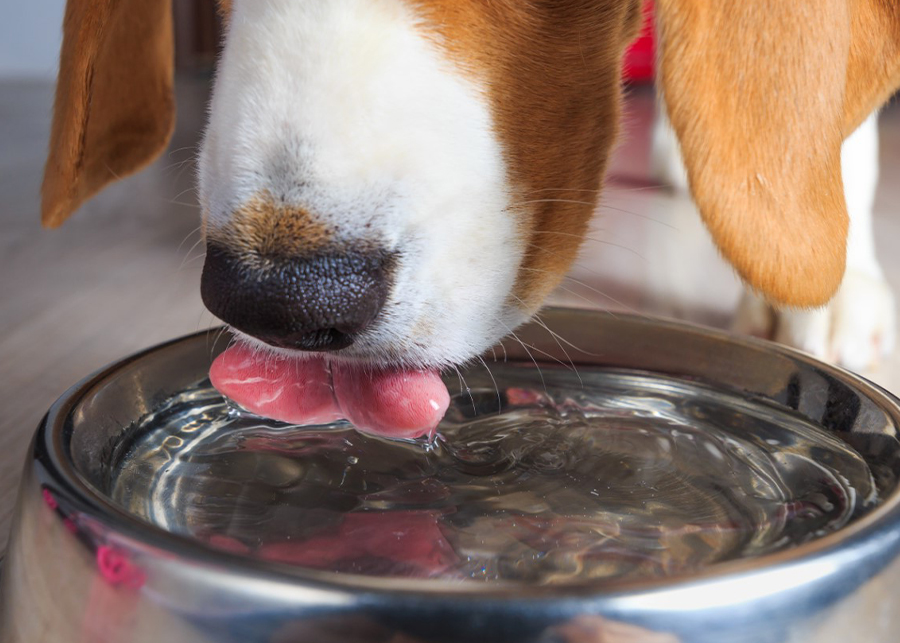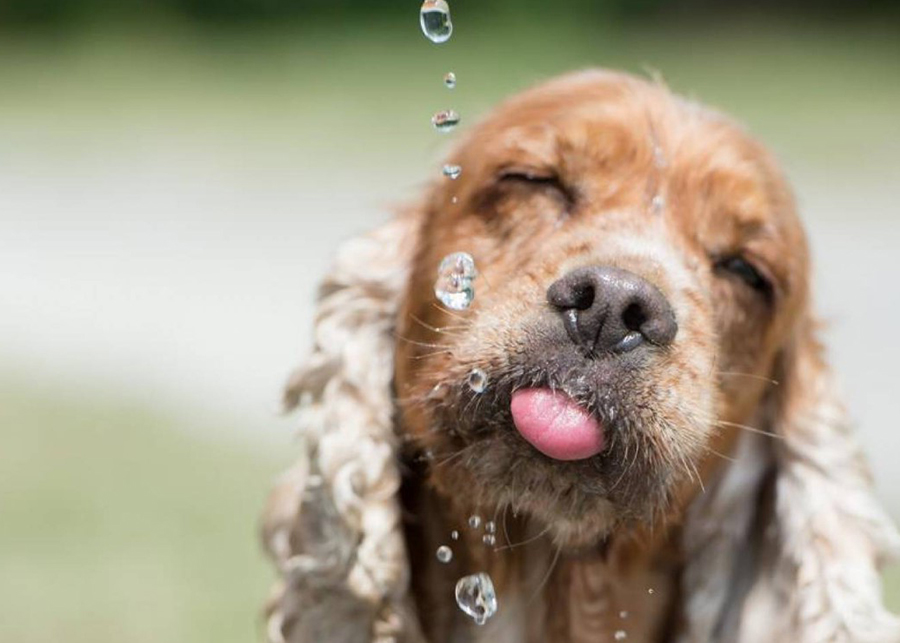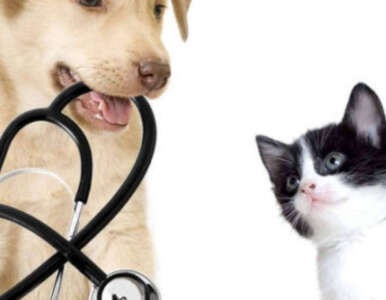There are some important questions you should ask yourself before giving your dog water. Do you know how much water a dog needs? Are you familiar with the effects of dehydration on a dog?
There are some important questions you should ask yourself before giving your dog water. First, how much water does a dog need? You should remember that older dogs are prone to dehydration. One way to help your dog drink water comfortably is to elevate the water bowl. Some older dogs also may have medical conditions that make them drink more water. If your dog has had negative experiences with water, he may associate it negatively, and you should try to change this.

How Much Water Does a Dog Need?
It’s important to provide your dog with plenty of water. The amount needed depends on its size, activity level, and age. In general, a healthy dog needs around 1/8th cup of water per pound of body weight. This may be higher in hotter weather or if it’s lactating.
Your dog’s body is composed of approximately 80 percent water. Without water, it will dehydrate. Water also helps the digestive system work properly and regulates body temperature. In addition, water helps the organs of the dog function optimally. If your dog is dehydrated, it could become ill or experience organ failure.
You can calculate your dog’s daily water intake by using a dog water intake calculator. This calculator has built- in conversions for different units. You can enter a dog’s weight and the calculator will calculate how much water your dog should drink throughout the day. The amount of water your dog needs may be different depending on its activity level, diet, and weather. If your dog is active or has to go outside all day, he will need more water. Remember to give your dog a bowl of clean water regularly to ensure that he stays hydrated.
Why Your Dog Might Drink Less Water Sometimes
Your dog might drink less water sometimes due to a variety of reasons. The weather may be changing, or your dog may not be as thirsty. Or perhaps they are not getting as much exercise. Whatever the reason, it’s important to keep your dog’s water intake up. If you notice your dog drinking less water than usual, you should consult your veterinarian to determine if your pet is dehydrated.
You can encourage your dog to drink more water by putting more water in his or her water bowl and rewarding him for drinking. Another good way to encourage your dog to drink more water is to offer him or her ice cubes. Your dog will be more likely to drink water if it tastes like ice, and it’s also a great treat for a hot day.
What Happens if a Dog Doesnt Get Enough Water?
If your dog isn’t drinking enough water, you’ll want to get it to the vet right away. Even mild dehydration can be dangerous. You’ll need to give your pet plenty of water and electrolyte drinks to make him feel better. If your dog is severely dehydrated, you’ll want to call a vet and get him an IV drip. Your vet will be able to
tell you exactly how much water your dog needs.
If you’re traveling, bring your dog’s water bowl or bottle with you. The taste of water is familiar to dogs, and it can encourage them to drink. Try mixing a flavoring in with water to increase their intake.

How to Check Your Dog for Dehydration
One of the first signs of dehydration in dogs is lack of elasticity in the skin. You can check your dog for this condition by pulling up a small patch of skin on their back. If it is healthy, the skin should spring back into place almost instantly. However, if your dog does not have adequate moisture levels, the skin will not return to normal and will stay raised for a few seconds. This is one of the first signs of dehydration, and if you are unsure of the condition of your dog, seek immediate medical advice.
Another symptom of dehydration in dogs is drooling. The saliva of your dog is usually watery and stringy, but when it is dehydrated, the saliva becomes thick and more viscous. Your dog may also show changes in its gums.
What if Your Dog Is Drinking an Excessive Amount o
Water drinking in dogs is not a normal behavior. There are many causes of excessive thirst in dogs, and some of them can be life-threatening. In addition to medical reasons, some dogs also drink too much water simply because they like it. Psychogenic polydipsia is one such cause.
Your first step should be to schedule an appointment with your veterinarian to get the proper diagnosis and treatment for your dog’s excessive thirst. Be aware that extreme thirst in dogs can quickly progress into water intoxication if left untreated. In addition, the symptoms of extreme thirst in dogs can get worse if you try to restrict their water intake or limit their diet.
Fortunately, there are many treatments for excessive water drinking in dogs. It is crucial to remember that the symptoms of water intoxication are unpleasant and sometimes life -threatening. If left untreated, it can lead to serious health consequences and even fatality. In cases of water intoxication, your veterinarian can prescribe a medication to reduce your dog’s intake and prevent any damage to his kidneys.
How Much Water Should a Dog Drink? Result
A huge problem with giving dogs water is that they sometimes feel uncomfortable drinking it. This is because the drinking process is new and your dog’s mind may be in a state of resistance. So, remember to make water drinking as pleasant as possible, so that it becomes more natural over time.





